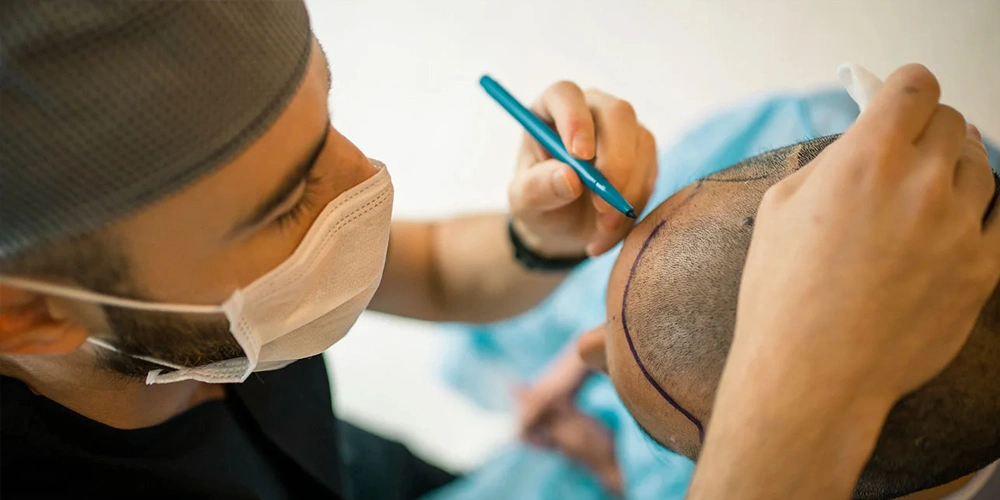
A hair transplant is a surgical procedure used to treat hair loss or to restore hair on the scalp or other parts of the body. It is usually performed for genetically caused hair loss (androgenetic alopecia). Here’s what you need to know:
🔍 What is a hair transplant?
During a hair transplant, hair follicles (hair roots, often called grafts) are transplanted from a donor area (usually the back of the head) to a recipient area (e.g., the forehead or tonsure).
✅ Suitable for:
Men with hereditary hair loss (e.g., receding hairline, tonsure, scalp, back of the head)
Women with diffuse hair thinning and hair loss
People with scars or hair loss after injuries
🛠️ Hair transplantation methods:
FUE (Follicular Unit Extraction)
Modern sapphire microblade technique
Individual hair follicles (grafts) are gently removed from the back of the head using fine instruments (sapphire)
Minimal scarring, very precise results
DHI technique (Direct Hair Implantation)
Individual micro-hair transplantation to fill thinning areas
PRP treatment (Platelet-Rich Plasma)
Injection of the body’s own blood plasma to stimulate hair growth (3 sessions) (required)
PRP treatment (Platelet-Rich Plasma) is an autologous blood therapy in which concentrated plasma with a high concentration of platelets is injected into the scalp or affected areas to promote regeneration and healing. It is often used to treat hair loss and skin rejuvenation.
PRP treatment procedure:
Blood collection: A small amount of blood is taken from the patient.
Plasma processing: The collected blood is processed in a centrifuge to isolate the platelet-rich plasma.
Injection: The PRP is injected into the skin or affected area using fine needles.
Areas of application:
Hair loss: PRP can stimulate hair growth and improve hair quality.
Skin rejuvenation: It can improve skin texture, reduce wrinkles, and increase elasticity.

💉 Treatment process:
Consultation and planning (including hairline and number of grafts)
Anesthesia of the donor area for hair follicle extraction (usually at the back of the head) and the recipient area (local)
Removal of the grafts
Preparation of the grafts
Insertion of the grafts
Aftercare and healing
🧪 After surgery:
Crust formation after a few days, healing within 7–14 days
First visible results after 3–4 months
Final result after approximately 9–12 months
New hair then grows back permanently (additional plasma injections or PRP treatments are recommended to support long-lasting, healthy hair growth)
💸 Costs:
Depending on the clinic, method, and Number of Grafts
Approx. €3,000 – €6,000 depending on the complexity and number of grafts
⚠️ Risks & Side Effects:
Swelling, redness, itching
Infections (rare)
Uneven growth
Scarring (minimal with FUE)
Possible need for follow-up treatments
📍 What should you look out for?
Certified and experienced clinic for plastic and aesthetic surgery
Information about realistic expectations
Before and after photos
Hygiene and quality standards



